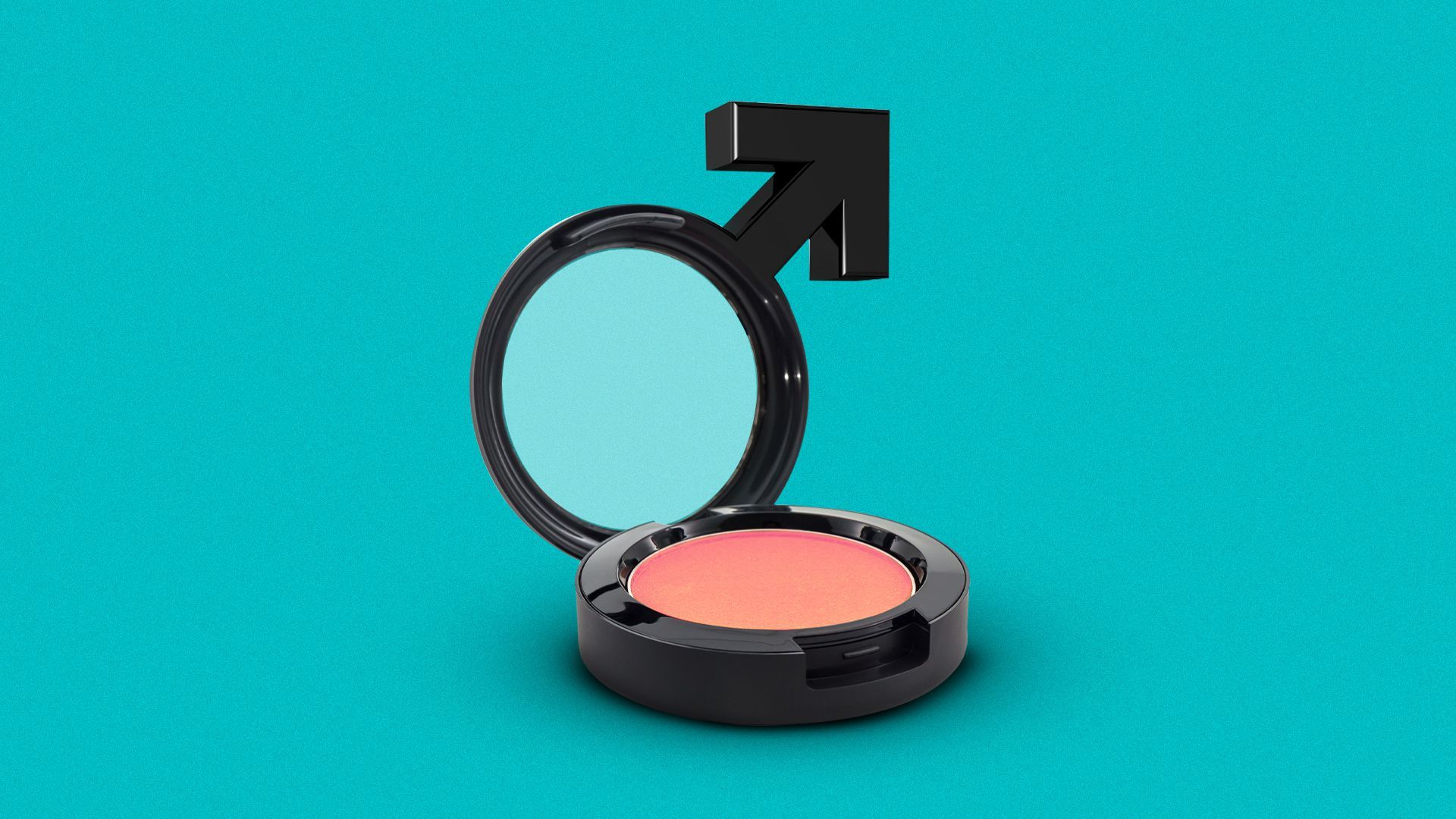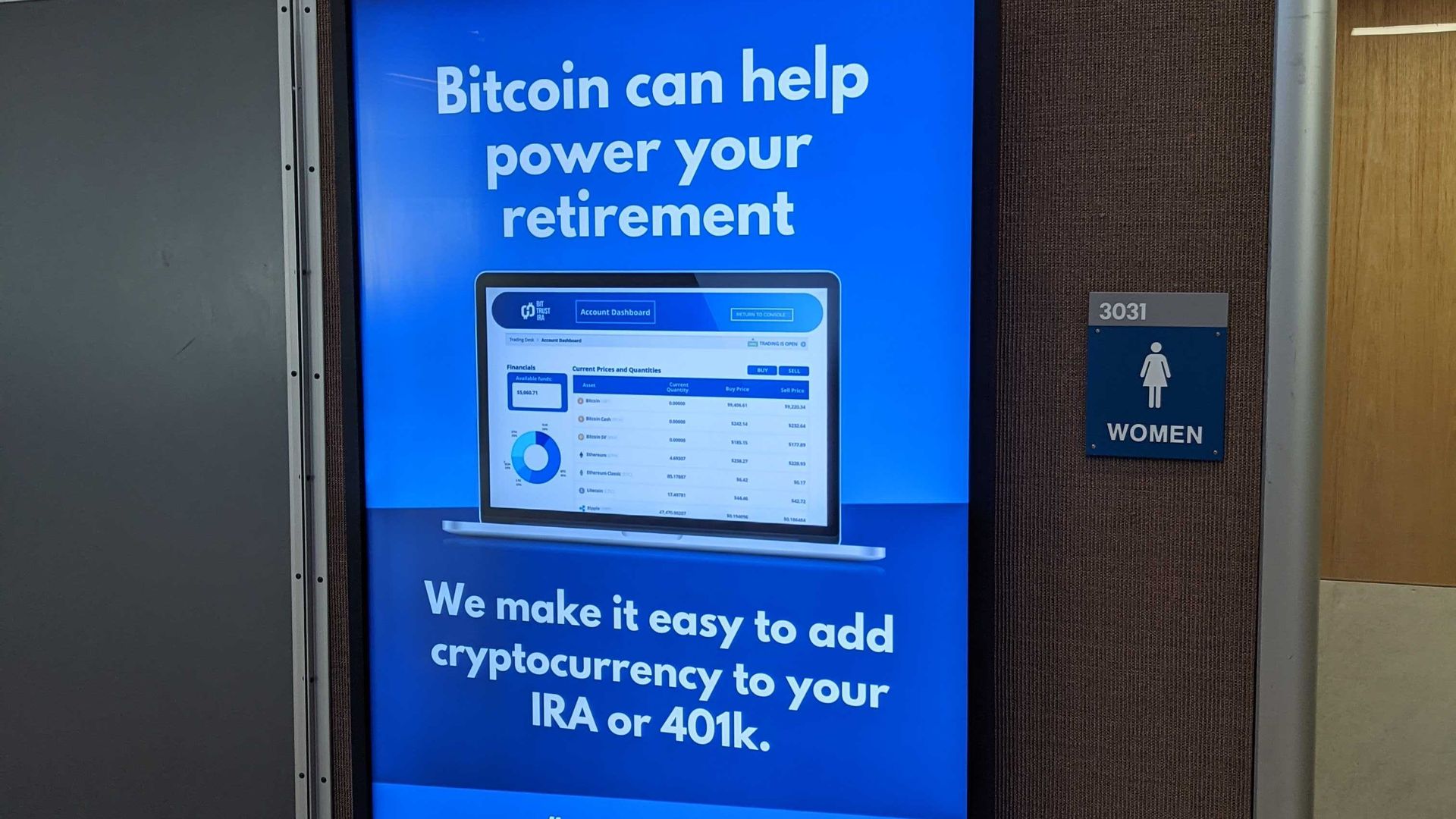| | | | | | | Presented By West Monroe | | | | Axios What's Next | | By Jennifer A. Kingson, Joann Muller and Erica Pandey ·Oct 29, 2021 | | Men are the new multibillion-dollar target of beauty brands, as Erica Pandey writes. - What's missing from your store shelves? We explore the topic below — and invite you to share your disappointments at whatsnext@axios.com.
- Today's photo du jour was taken by Nicholas Johnston, the publisher of Axios, from a recent visit to Austin, Texas, in support of the ongoing expansion of Axios Local!
Today's Smart Brevity count: 1,045 words ... 4 minutes. | | | | | | 1 big thing: Makeup goes after men |  | | | Illustration: Aïda Amer/Axios | | | | Beauty brands are going after a huge new group of consumers: men, Erica writes. Why it matters: Redefining makeup as something anyone can wear chips away at the gender norms and beauty standards that women have dealt with for generations. And cosmetics companies see big dollar signs. What's happening: The U.S. men's personal care market is expected to swell from $47 billion in 2019 to nearly $78 billion by 2027, according to Grand View Research. That includes hair and skin care and — increasingly — makeup. - Male makeup influencers, bloggers and makeup artists are gaining popularity.
- Legacy beauty companies that have historically targeted women are launching new lines for men.
- For example, Chanel has introduced "Boy de Chanel" and Givenchy has "Givenchy Mister."
- And there's a slew of men's makeup startups on the scene, with products exclusively for male consumers. Even retired baseball star Alex Rodriguez has launched a men's makeup line.
Makeup "is the final frontier of men's grooming," says Devir Kahan, CEO and founder of the men's makeup startup Stryx. "This is where it has been heading." - Many men have been using makeup for a while, but have only recently found products designed for them.
- Stryx has a "discreet" concealer that looks like a pen — so men can just slip it into a jacket pocket if they'd like to be casual about wearing makeup, Kahan says.
- Stryx's products are formulated differently from traditional women's products, because men's skin is typically tougher and oilier, he says.
Worth noting: While makeup for men is a relatively new trend in Western countries, it is already common and popular in Asia. - Asia currently has about 65% of the men's cosmetics market, compared with North America's 5%, according to insights from the market research firm Mintel provided to Axios.
The bottom line: "When I was in high school, I was the kid that was doing my hair every morning and doing my skin care," Stryx's Kahan says. "And that was weird then — I was the only guy doing it." - "Now, if you're not putting effort into that stuff, that's the weird thing."
Share this story. |     | | | | | | 2. Millions of boomers retired early during the pandemic |  Reproduced from Miguel Faria e Castro and the Federal Reserve; Chart: Axios Visuals The pandemic pushed more than 3 million baby boomers into premature retirement, according to a new analysis from Miguel Faria e Castro, a senior economist at the St. Louis Fed, Erica writes. Why it matters: The wave of early retirements is contributing to the labor shortage that's roiling the U.S. economy. What's happening: Many older workers faced layoffs, and others left the workforce to protect themselves from the risk of infection. - It's much harder for workers in their 50s and 60s — or older — to re-enter the workforce after a period of unemployment, due to persistent ageism in corporate America.
- So it's likely that many of those who left jobs got discouraged and chose to retire instead.
Older workers also may have built up a financial cushion during the pandemic and chosen to retire, Faria e Castro notes. - "The COVID-19 recession was abnormal in the sense that it featured a sharp downturn in real economic activity but also rising asset values, such as for housing and stocks," he writes. That may have made early retirement possible for many.
The big picture: The early retirement wave isn't the only trend chipping away at labor force participation. The total number of people who left the workforce during the pandemic — including the 3 million early retirees — is around 5.25 million, per Faria e Castro's analysis. - That includes working mothers who left jobs to care for kids and immunocompromised people who stayed home from work for their health.
What to watch: That 5.25 million number could shrink significantly as pandemic-era factors keeping people out of work go away. Some early retirees could also come back to the workforce. Share this story. |     | | | | | | 3. The great stuff shortage of 2021 |  Data: Deloitte Insights; Chart: Axios Visuals "Supply chain disruption" is an eyes-glaze-over way to describe something we're confronting as consumers: The items that we set out to buy are missing from store shelves or listed online as "out of stock," Jennifer A. Kingson writes. What's happening: Consulting firms and other trend-trackers are widely reporting a disconnect between our eagerness to spend money — because the pandemic has left many of us cash-rich — and the growing dearth of items we want to buy. - Anecdotally, there are shortages of Lunchables and Grape-Nuts and Dr Pepper, as well as pet food, turkeys and canned goods.
- Other widely reported categories include microchips, lumber, chlorine, dish soap and booze — the list goes on and on, and can vary regionally.
- Online, the situation is similar, with websites big and small experiencing "stockouts" and shoppers getting creative in their buying strategies.
Tell us what you're seeing: What's missing from your store shelves, or what couldn't you find online? What are your thoughts about the whole situation? Write to: whatsnext@axios.com. |     | | | | | | A message from West Monroe | | What athletic training can teach us about becoming a digital business | | |  | | | | What do high-performing athletes and digital businesses have in common? They're both committed to a lifestyle. Becoming a digital company is a choice — one marked by a set of habits you practice every day. Just like an athlete. Learn what digital training looks like. | | | | | | 4. Naming modern neighborhoods |  | | | Photo: Katie Peralta Soloff/Axios | | | | Every neighborhood name started somewhere — be it SoHo or NoLita in New York or the South End in Boston — but for some reason, neighborhood names like LoSo and MoRA in Charlotte, North Carolina, can evoke some serious eye rolls, Katie Peralta Soloff writes in Axios Charlotte. Why it matters: These newer names often are concocted by developers, marketing firms or neighborhood organizations. They usually have similar goals: To establish a neighborhood identity, give people a sense of place and give an area a way to set it apart. Yes, but: The backlash often comes from a sense that these names feel manufactured. Should a neighborhood brand be a marketing effort — or should it come about organically? Why it matters: The "name game" is a result of a fast-growing city that's adding thousands of new residents every year, as Ely Portillo wrote for the Charlotte Observer in 2016. Names like MoRA (Monroe Road Area) are newer, but people have used NoDa (North Davidson) for so long that it's widely accepted. Jennifer's thought bubble: As Harlem has gentrified in my native NYC, monickers propagated by real estate brokers — like the seemingly defunct "CeHa" for Central Harlem — have come and gone. Read the full story. |     | | | | | | 5. Photo of the day |  | | | Photo: Nicholas Johnston/Axios Media | | | | Axios publisher Nicholas Johnston writes: "What's next in bad investment advice ... as seen in the Austin airport." |     | | | | | | A message from West Monroe | | Leading companies treat digital as a mindset, not a project | | |  | | | | Bottom line? Digital transformation projects fail. Your business either has a digital mindset, or it doesn't, so: - Treat digital as a team sport.
- Solve business challenges, not technical needs.
- Organize around the customer and never stop adapting.
Learn how to become a digital business. | | | | Feeling left out because all your friends get What's Next and you still don't? Signing up for our newsletter here — it's free! |  | | It'll help you deliver employee communications more effectively. | | | | | | Axios thanks our partners for supporting our newsletters. If you're interested in advertising, learn more here.
Sponsorship has no influence on editorial content. Axios, 3100 Clarendon Blvd, Suite 1300, Arlington VA 22201 | | | You received this email because you signed up for newsletters from Axios.
Change your preferences or unsubscribe here. | | | Was this email forwarded to you?
Sign up now to get Axios in your inbox. | | | | Follow Axios on social media:    | | | | | |









No comments:
Post a Comment